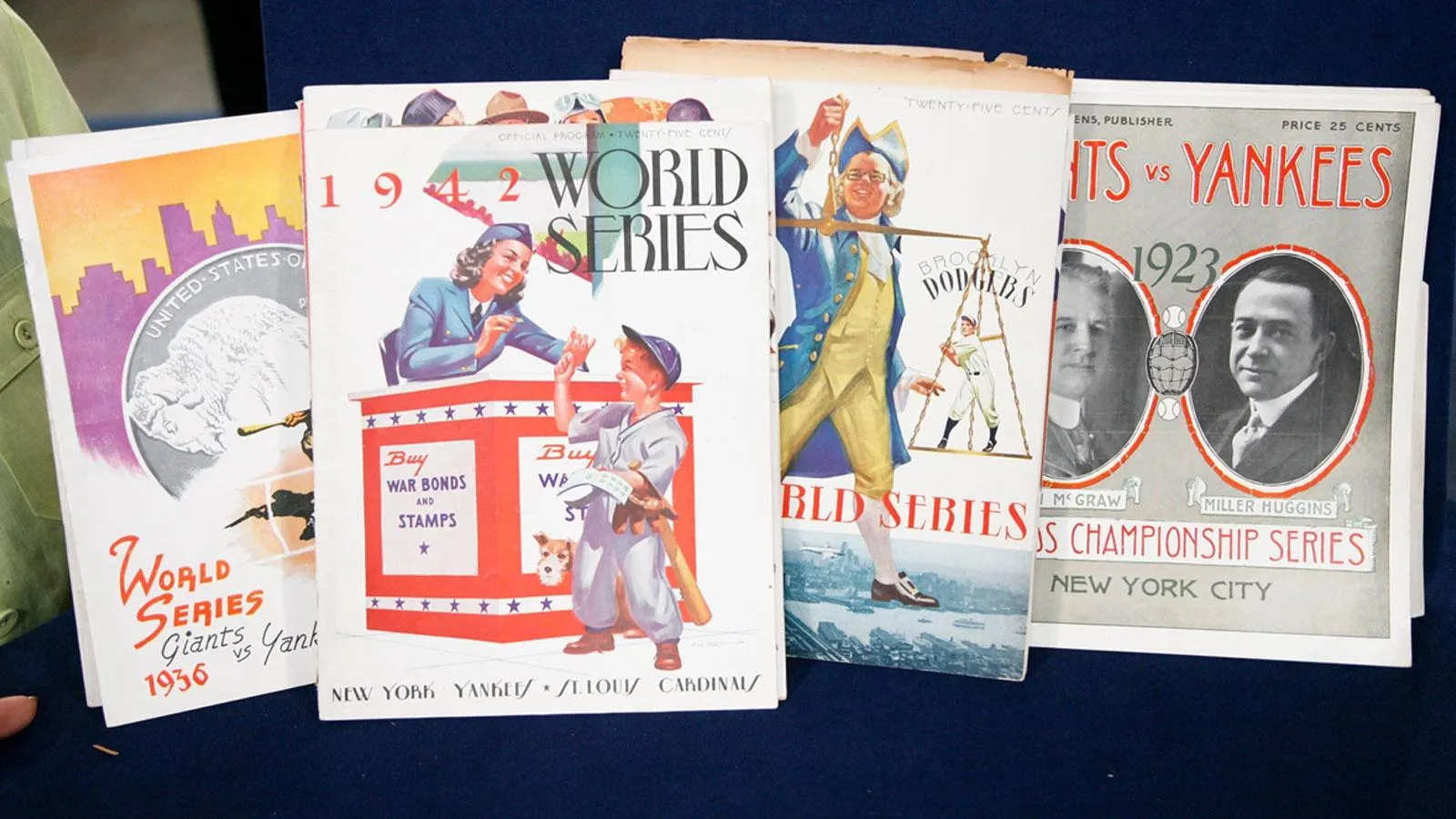Child's Desk-on-Frame
GUEST: I got it at an living estate sale about two or three years ago. It looked like it was all original, and the color was, was great. I liked the little drawers on it.
APPRAISER: Yeah.
GUEST: And then the way that, that these things slide out, and that the tabletop folds down.
APPRAISER: So this is the writing surface, right?
GUEST: That's the writing surface. And it had some little cubbies and some little drawers that were pretty attractive.
APPRAISER: And what'd you pay for it, may I ask?
GUEST: Uh, it was, I can't remember exactly. It was, like, $200 to $250, from what I remember.
APPRAISER: Okay, do you know where it was made?
GUEST: I don't know where it was made, but the individual that I bought it from, she was about 80 years old, and she was from the New England area.
APPRAISER: Okay.
GUEST: And she said that she could remember her dad writing on it, you know, at night, and things like that when she was growing up.
APPRAISER: Well, New England makes a lot of sense, because this, stylistically, is a Massachusetts child's desk-on-frame, and actually, these are extremely rare. This form for children's furniture in the 18th century, in the, in Colonial America, they hardly ever turn up.
GUEST: Oh, really?
APPRAISER: They just didn't survive.
GUEST: Yes.
APPRAISER: And interestingly, we know that they're coveted so much that over the years, we've seen pieces that, where they have extended the base and raised the height of a piece as the child gets older.
GUEST: Oh!
APPRAISER: This upper section, look at that wear. Look at the indentations and all the marks.
GUEST: Yes.
APPRAISER: The beautiful patina, the nail holes coming through from the hinges, all that's great.
GUEST: Uh-huh.
APPRAISER: And if we pull out this drawer, where the young student would, would have kept their books, you know, in here, papers, right?
GUEST: Okay, okay.
APPRAISER: All the, study the alphabet, right? Look at that color. Yes. Just great oxidized pine, white pine.
GUEST: White pine? Okay.
APPRAISER: Which also makes it New England.
GUEST: Okay, yes.
APPRAISER: They're very typical of New England.
GUEST: Yes.
APPRAISER: As was that shaping on the interior. And actually, the brass hardware on this, since I don't see any holes on the back side, I think it may be original.
GUEST: Oh, original?
APPRAISER: Which is really great.
GUEST: Uh-huh.
APPRAISER: The moldings are all typical Massachusetts. 1760, about.
GUEST: Wow.
APPRAISER: Now, if we could take this desk, and you know this is in two parts, we're going to lift this up, please. You can put this down. I just want to take that, and let's look at the base.
GUEST: Okay.
APPRAISER: Because these are in two parts, it's always really important to inspect the base, because sometimes, these got separated from each other. I can't even keep a pair of socks together to match, so, you know...
GUEST: (laughs)
APPRAISER: So imagine keeping this over this period of time.
GUEST: Yes.
APPRAISER: Let's turn it over. And these little chop marks, there's lots of them here. You see that?
GUEST: Yes, I see that.
APPRAISER: And what that is, whenever we see that on these legs, that's, uh, to induce wear. Someone's taken a piece of wood, and to make it look older...
GUEST: Oh!
APPRAISER: ...a faker has actually marked it up and chopped all the same marks. But instead of 200 years of age...
GUEST: Yes.
APPRAISER: ...it's, this is done in about four minutes.
GUEST: Okay.
APPRAISER: All with the same tool. The person that made this was trying to deceive. Part of the deception here was that he used three pieces of old wood, and all the rest of this is fresh, brand-new wood at the time he made it.
GUEST: And which of the piece is the...
APPRAISER: Exactly, the pieces right here. The dark-colored side rails are from an 18th-century table...
GUEST: Okay.
APPRAISER: ...made of maple. And look at all that wear, it's all natural. Then you have the legs made around it, and even faked the pins and raised them up to make it look like they've shrunk and popped up.
GUEST: Oh, okay.
APPRAISER: The other thing is, for something this old, the feet would be reduced another half-inch. Just naturally, for a second half of the 18th century piece, there'd be a lot more wear in the feet.
GUEST: Okay, okay.
APPRAISER: Also, this curve from the feet touching over, over the years, the little feet, is actually much too even. It should be very uneven, it's just perfect.
GUEST: Okay.
APPRAISER: It was sanded down. And one mistake is on the back, where, look, feet wouldn't touch it at all.
GUEST: Yeah.
APPRAISER: He sanded that down and gave it wear.
GUEST: Okay.
APPRAISER: Okay? So what we have here is something that's a period, 18th-century top... And it's a period, 18th-century top. The desk and the bottom was made probably in the 1920s or '40s. In the condition this is in, I'd put an auction estimate on this piece of about $1,500 to $2,500.
GUEST: Okay.
APPRAISER: Okay? Which isn't bad, good profit.
GUEST: That's great, yeah, that's great.
APPRAISER: But if this had been all original, it's such a rare form...
GUEST: Uh-huh.
APPRAISER: ...it would have been about $30,000 to $35,000.
GUEST: Wow!
APPRAISER: Had it had the original base.
GUEST: With the original base, it makes...
APPRAISER: With the original base, but...
GUEST: Makes that much of a difference.
APPRAISER: It, it really does.

$1,500 - $2,500 Auction
$1,500 - $2,500 Auction
San Antonio, TX (2007)
Featured In
episode

episode
Vintage San Antonio, Hour 2
Which San Antonio finds have soared since 2007? Guess the find that jumped to $80,000!
Things to Use or Wear

appraisal

appraisal

appraisal

appraisal
Understanding Our Appraisals
Placeholder





